Visit to download the full and correct content document: https://ebookmass.com/product/manual-of-critical-care-nursing-e-book-nursing-interv entions-and-collaborative-management-ebook-pdf/

More products digital (pdf, epub, mobi) instant download maybe you interests ...
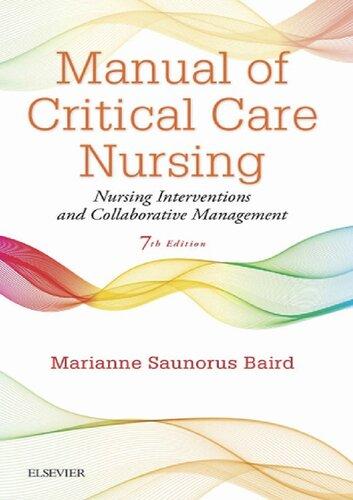
Manual of Critical Care Nursing: Nursing Interventions and Collaborative Management 7th Edition Marianne Saunorus Baird
https://ebookmass.com/product/manual-of-critical-care-nursingnursing-interventions-and-collaborative-management-7th-editionmarianne-saunorus-baird/
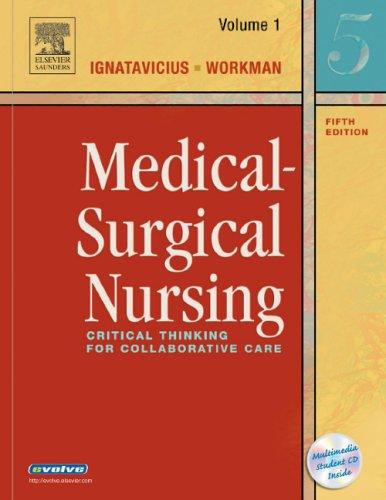
Medical-Surgical Nursing: Critical Thinking for Collaborative Care
https://ebookmass.com/product/medical-surgical-nursing-criticalthinking-for-collaborative-care/

Leadership and Nursing Care Management E Book 6th Edition, (Ebook PDF)
https://ebookmass.com/product/leadership-and-nursing-caremanagement-e-book-6th-edition-ebook-pdf/
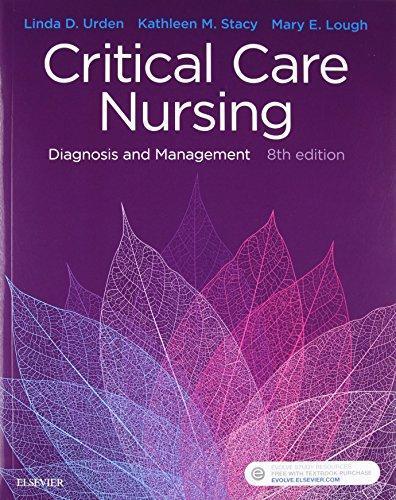
Critical Care Nursing: Diagnosis and Management 8th Edition
https://ebookmass.com/product/critical-care-nursing-diagnosisand-management-8th-edition/

Medical Surgical Nursing E Book: Concepts for Interprofessional Collaborative Care 9th Edition, (Ebook PDF)
https://ebookmass.com/product/medical-surgical-nursing-e-bookconcepts-for-interprofessional-collaborative-care-9th-editionebook-pdf/
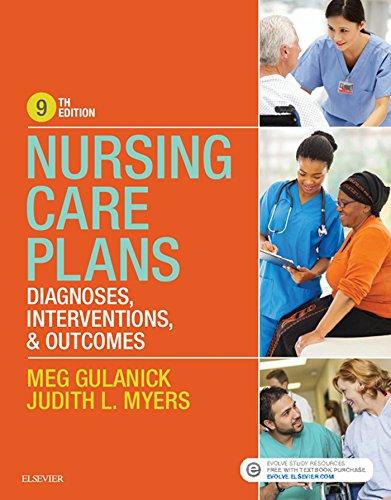
Nursing Care Plans E Book: Nursing Diagnosis and Intervention 9th Edition, (Ebook PDF)
https://ebookmass.com/product/nursing-care-plans-e-book-nursingdiagnosis-and-intervention-9th-edition-ebook-pdf/
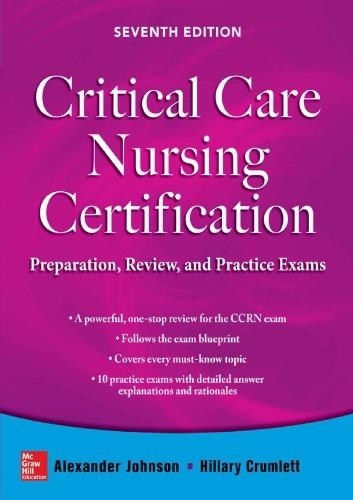
Critical care nursing certification. Johnson
https://ebookmass.com/product/critical-care-nursingcertification-johnson/

Varcarolis’ Manual of Psychiatric Nursing Care Planning: An
https://ebookmass.com/product/varcarolis-manual-of-psychiatricnursing-care-planning-an/

Nursing Care Plans: Diagnoses, Interventions, and Outcomes 9th Edition
https://ebookmass.com/product/nursing-care-plans-diagnosesinterventions-and-outcomes-9th-edition/

Heart and breath sounds
Glasgow coma scale
Cranial nerves Assessment and dysfunctions
Major deep tendon muscle stretch reflexes
Major superficial cutaneous reflexes
Inotropic and vasoactive medication infusions
Sample relaxation technique
Abbreviations used in this manual
Index
Ibc
Copyright

3251 Riverport Lane
St. Louis, Missouri 63043
MANUAL OF CRITICAL CARE NURSING: NURSING INTERVENTIONS AND COLLABORATIVE MANAGEMENT,
SEVENTH EDITION
ISBN: 978-0-323-18779-4
Copyright © 2016 by Elsevier, Inc. All rights reserved.
No part of this publication may be reproduced or transmitted in any form or by any means, electronic or mechanical, including photocopying, recording, or any information storage and retrieval system, without permission in writing from the publisher. Details on how to seek permission, further information about the Publisher’s permissions policies and our arrangements with organizations such as the Copyright Clearance Center and the Copyright Licensing Agency, can be found at our website: www.elsevier.com/permissions.
This book and the individual contributions contained in it are protected under copyright by the Publisher (other than as may be noted herein).
All rights reserved. No part of this publication may be reproduced or transmitted in any form or by any means, electronic or mechanical, including photocopying, recording, or any information storage and retrieval system, without permission in writing from the publisher,
except that, until further notice, instructors requiring their students to purchase Book Title by Author, may reproduce the contents or parts thereof for instructional purposes, provided each copy contains a proper copyright notice as follows: Copyright © 2016 by Elsevier Inc. Details on how to seek permission, further information about the Publisher’s permissions policies and our arrangements with organizations such as the Copyright Clearance Center and the Copyright Licensing Agency, can be found at our website: www.elsevier.com/permissions.
Notices
Knowledge and best practice in this field are constantly changing. As new research and experience broaden our understanding, changes in research methods, professional practices, or medical treatment may become necessary. Practitioners and researchers must always rely on their own experience and knowledge in evaluating and using any information, methods, compounds, or experiments described herein. In using such information or methods they should be mindful of their own safety and the safety of others, including parties for whom they have a professional responsibility.
With respect to any drug or pharmaceutical products identified, readers are advised to check the most current information provided (i) on procedures featured or (ii) by the manufacturer of each product to be administered, to verify the recommended dose or formula, the method and duration of administration, and contraindications. It is the responsibility of practitioners, relying on their own experience and knowledge of their patients, to make diagnoses, to determine dosages and the best treatment for each individual patient, and to take all appropriate safety precautions. To the fullest extent of the law, neither the Publisher nor the authors, contributors, or editors, assume any liability for any injury and/or damage to persons or property as a matter of products liability, negligence or otherwise, or from any use or operation of
any methods, products, instructions, or ideas contained in the material herein.
NANDA International, Inc. Nursing Diagnoses: Definitions & Classifications 2015-2017, Tenth Edition. Edited by T. Heather Herdman and Shigemi Kamitsuru. 2014 NANDA International, Inc. Published 2014 by John Wiley & Sons, Ltd. Companion website: www.wiley.com/go/nursingdiagnoses.
Previous editions copyrighted 2011, 2005, 2001, 1998, 1995, 1991. International Standard Book Number: 978-0-323-18779-4
Executive Content Strategist: Lee Henderson
Content Development Manager: Jean Fornango
Content Development Specialist: Melissa Rawe
Publishing Services Manager: Julie Eddy
Senior Project Manager: Marquita Parker
Book Designer: Ashley Miner
Printed in the United States of America
Last digit is the print number: 9 8 7 6 5 4 3 2 1

Contributors
Patrice C. Al-Saden, BS, RN, CCRC, Senior Clinical Research Associate, Comprehensive Transplant Center, Feinberg School of Medicine, Chicago, Illinois
Sonia Astle, RN, MS, CCNS, CCRN, CNRN, Clinical Nurse Specialist, Critical Care, Inova Fairfax Medical Campus, Falls Church, Virginia
Carol Ann Batchelder, MSN, RN, CCRN, ACCNS-AG BC, Clinical Nurse Specialist, Intensive Care Units, Tri-campus, Northside Hospital System, Atlanta, Georgia
Risa Benoit, DNP, CNS-BC, Advanced Practice Nurse, Perioperative Services, Sarasota Memorial Healthcare System, Sarasota, Florida
Cheryl L. Bittel, MSN, APRN, CCNS, NP-C, CCRN, Clinical Nurse Specialist, Emory Saint Joseph’s Hospital, Atlanta, Georgia
Carolyn Blayney, BSN, RN, Clinical Operation Manager, Pediatrics, Harborview Medical Center, Seattle, Washington
Madalina Boitor, BScN, RN, PhD Student, Ingram School of Nursing, McGill University, Montreal, Canada
Jemma Brown, MSN-ED, RN, CCRN, CCM-BC, Stroke Program Coordinator, Emory University Hospital Midtown, Atlanta, Georgia
Susan B. Cali, MSN, RN, MHA, Infection Control Coordinator, Emory University Hospital Midtown, Atlanta, Georgia
Mimi Callanan, MSN, RN, Epilepsy Clinical Nurse Specialist, Stanford Comprehensive Epilepsy Center, Stanford Health Care, Stanford, California
Gretchen J. Carrougher, MN, RN, Research Nurse Supervisor, Department of Surgery, Harborview Medical, Center, Seattle, Washington
Cynthia Rebik Christensen, MSN, CVN, ARNP-BC, Nurse Practitioner, Family Practice, Certified Vascular Nurse, Mobile Medical Professionals, Ankeny, Iowa
Janice C. Colwell, MS, RN, CWOCN, FAAN, Advanced Practice Nurse, University of Chicago Medicine, Chicago, Illinois
Alice E. Davis, PhD, GNP-BC, ACNP-BC, FNP-BC, Associate Professor, School of Nursing, University of Hawaii at Hilo, Hilo, Hawaii
Joni L. Dirks, MS RN-BC, CCRN-K, Manager Clinical Educators & ICU Educator, Providence Health Care, Spokane, Washington
Beverly George Gay, MSN, RN, Assistant Professor, Department of Nurse Anesthesia, School of Allied Health Professions, Virginia Commonwealth University, Richmond, Virginia
Céline Gélinas, PhD, RN
Associate Professor, Ingram School of Nursing, McGill University Researcher, Center for Nursing Research and Lady Davis, Institute for Medical Research, Jewish General Hospital, Montreal, Quebec, Canada
Patricia R. Gilman, APRN, MSN, ACNS-BC
Adult Health Clinical Nurse Specialist, Cardiac ICU, Emory University Hospital (2012–2014), Atlanta, Georgia
Robert Wood Johnson Nursing & Health, Policy Collaborative Fellow, University of New Mexico College of Nursing, Albuquerque, New Mexico
Vicki S. Good, RN, MSN, CENP, CPSS, System Director
Quality/Safety, CoxHealth, Springfield, Missouri
Phyllis Gordon, MSN, APRN, ACNS-BC
Clinical Nurse Specialist, Vascular Surgery, Division Clinical Assistant Professor, School of Nursing, University of Texas Health Science Center, San Antonio, San Antonio, Texas
Kimberly Graham, MSN, APRN, ACNS-BC, Clinical Nurse Specialist, General Medical, Emory University Hospital Midtown, Atlanta, Georgia
Vinay Paul Singh Grewal, B.Sc., Medical Student, Windsor University School of Medicine, St. Kitts
Kiersten Henry, MSN, ACNP-BC, CCNS, CCRN-CMC, Acute Care Nurse Practitioner, Chief Advanced Practice Provider, MedStar Montgomery Medical Center, Olney, Maryland
Adina Hirsch, PharmD, BCNSP
Clinical Specialist–Nutrition Support, Critical Care, Saint Joseph’s Hospital of Atlanta;
Assistant Professor of Pharmacy Practice, School of Pharmacy, Philadelphia College of Osteopathic Medicine, Atlanta, Georgia
Beth Hundt, MS, APRN, NP-C, ACNS-BC
Clinical Nurse Specialist, Marcus Stroke & Neuroscience Center, Grady, Health System, Atlanta, GA (2012–2014); Clinical Nurse Specialist, Neuroscience Center of Excellence, University, of Virginia Health System, Charlottesville, Virginia (current)
Susie Hutchins, DNP, RN, Associate Clinical Professor, Coordinator, Simulation and Standardized Patient Lab for, MEPN, University of San Diego, Hahn School of Nursing, San Diego, California
Anne E. Hysong, MSN, APRN, CCNS, Clinical Nurse Specialist, Critical Care, Gwinnett Medical Center–Duluth, Duluth, Georgia
Jonathan Wesley Kandiah, B.Sc., Medical Student, All Saints University, St. Vincents and the Grenadines
Roberta Kaplow, PhD, APRN-CCNS, AOCNS, CCRN, Oncology
Clinical Nurse Specialist, Emory University Hospital, Atlanta, Georgia
Alice S. Kerber, MN, APRN, ACNS-BC, AOCN, APNG, Clinical Nurse Specialist, Oncology, Advanced Practice Nurse in Genetics, Georgia Center for Oncology Research and, Education (Georgia CORE), Atlanta, Georgia
Kathleen Kerber, MSN, RN, ACNS-BC, CCRN, Clinical Nurse Specialist, Medical Intensive Care Unit/Critical Care, Step Down Unit, MetroHealth Medical Center, Cleveland, Ohio
Barbara McLean, MN, RN, CCNS-BC, NP-BC, CCRN, FCCM, Critical Care Clinical Specialist, Critical Care Division, Grady Health Systems, Atlanta, Georgia
James P. McMurtry, MSN, APRN, CNS-BC, CCRN, Clinical Nurse Specialist, MICU; Pulmonary Critical Care, Emory University Hospital Midtown, Atlanta, Georgia
Maria Paulsen, BSN, RN, Critical Care Nurse, Coordinator, Trauma Outreach Education, Program, Harborview Medical Center, Seattle, Washington
Lisa Reif, MSN, RN, APRN-CCNS, CCRN, Clinical Nurse Specialist, Neuroscience ICU, Emory University Hospital, Atlanta, Georgia
Alan Sanders, PhD, Director, Ethics, Trinity Health, Newtown Square Office, Pennsylvania
Paul E. Schmidt, RPh, BCPS, Clinical Pharmacist, Critical Care, Northside Forsyth Hospital, Cumming, Georgia
Elizabeth Scruth, PhD, RN, MPH, FCCM, CCNS, CCRN
Clinical Practice Consultant, Clinical Effectiveness Team, Kaiser Permanente Northern California, Regional Quality and Regulatory Services, Oakland, California
Critical Care Transport RN, Bayshore Ambulance, Foster City, California
Maureen A. Seckel, MSN, RN, APN, ACNS-BC, CCNS, CCRN, FCCM, Clinical Nurse Specialist, Medical Pulmonary Critical Care, Christiana Care Health System, Newark, Delaware
Kara A. Snyder, MS, RN, CCRN, CCNS, Director, Quality Improvement and Outcomes, Management, Banner University Medical Center, Tucson, and South Campuses, Tucson, Arizona
Monica Tennant, MSN, APRN, CCNS, Critical Care Clinical Nurse Specialist, Emory Saint Joseph’s Hospital, Atlanta, Georgia
Daryl Todd, MS, APRN-CNS, CCCC, ACNS-BC, Certified
Cardiovascular Care Coordinator, Clinical Nurse Specialist, Coordinator Bariatrics and Chest Pain, Centers of Excellence, Clinical Support for, Hospice and Observation Units, Emory University Hospital Midtown, Atlanta, Georgia
Sharon Vanairsdale, MS, APRN, ACNS-BC, NP-C, CEN, Clinical Nurse Specialist, Emergency Department and Serious Communicable Disease Unit, Emory University Hospital, Atlanta, Georgia
Colleen Walsh-Irwin, DNP, RN, ANP, CCRN Cardiology Nurse Practitioner, Northport VAMC, Northport, New York;
Cardiovascular Clinical Nurse Advisor, Department of Veterans Affairs, Washington, DC; Clinical Assistant Professor, Stony Brook University, Stony Brook, New York
Joyce Warner, MN, RN, CCRN, Nurse Clinician, Surgical Intensive Care Unit, Emory Healthcare, Atlanta, Georgia
Karen E. Zorn, MSN, RN, ONC, Enterprise Solution Architect, Acute Care Integration, Emory Healthcare, Atlanta, Georgia
Reviewers
Bimbola Fola Akintade, PhD, ACNP-BC, MBA, MHA, CoSpecialty Director and Assistant Professor, Adult Gerontological Acute Care Nurse, Practitioner/Clinical Nurse Specialist, Program, University of Maryland Baltimore, School of Nursing, Baltimore, Maryland
David Allen, MSN, RN, CCRN, CCNS-BC, Deputy Chief, Center for Nursing Science and, Clinical Inquiry, Brooke Army Medical Center, Fort Sam Houston, TX 78109
Penelope S. Benedik, PhD, CRNA, RRT, Associate Professor of Clinical Nursing, University of Texas Health Science Center at, Houston, Houston, TX
Marcia Bixby, RN, MS, CCRN, APRN-BC, Critical Care Clinical Nurse Specialist, Consultant, Randolph, Massachusetts
Marylee Bressie, DNP, RN, CCRN, CCNS, CEN, Assistant Professor, University of Arkansas Fort Smith and, Capella University, Ft Smith, Arkansas and Minneapolis, Minnesota
Diane Dressler, MSN, RN, CCRN, Clinical Assistant Professor, Marquette University College of Nursing, Milwaukee, WI
Jennifer L. Embree, DNP, RN, NE-BC, CCNS, Clinical Assistant
Professor and Consultant, Indiana University School of NursingIndiana, University Purdue University Indianapolis, Indianapolis, Indiana
Joyce Foresman-Capuzzi, MSN, RN, CCNS, CEN, CPN, CPEN, CCRN, CTRN, SANE-A, AFN-BC, EMT-P, FAEN, Clinical Nurse Educator, Lankenau Medical Center, Wynnewood, PA
David Goede, DNP, ACNP-BC, Assistant Professor of Nursing, Hospitalist, Nurse Practitioner, University of Rochester School of Nursing, Rochester New York
Vinay Paul Singh Grewal, B.Sc., Medical Student, Windsor University School of Medicine, Basseterre, Saint Kitts & Nevis
Elizabeth A. Henneman, PhD, RN, CCNS, FAAN, Associate Professor of Nursing, University of Massachusetts Amherst, Amherst, Massachusetts
Jennifer M. Joiner, MSN, RN, AGPCNP-BC, CCRN-CSC, Clinical Nurse Educator, CTICU, and CCU Robert Wood Johnson University Hospital, New Brunswick, NJ
Irena L. Kenneley, PhD, APHRN-BC, CIC, Assistant Professor/Faculty Development Coordinator, Case Western Reserve University, Cleveland, Ohio
Julene B. Kruithof, MSN, RN, CCRN, Nurse Educator, Spectrum Health, Grand Rapids, Michigan
Elaine Larson, PhD, RN, FAAN, Anna C. Maxwell Professor of Nursing, Research, School of Nursing and Professor, of Epidemiology,
Mailman School of Public, Health, Columbia University, Columbia University, NY, NY
Rosemary K. Lee, DNP, ARNP-BC, CCNS, CCRN, Clinical Nurse Specialist, Homestead Hospital, Homestead, FL
Justin Milici, MSN, RN, CEN, CPEN, CFRN, CCRN, TNS, RN III Emergency Department, Parkland Health and Hospital System, Dallas, Texas
Fadi B. Nahab, MD
Associate Professor, Department of Necrology and Pediatrics, Emory University
Medical Director, Stroke Program, Emory University Hospitals, Atlanta, Georgia
Michaelynn Paul, MS, RN, CCRN, Assistant Professor, Walla Walla University, College Place, Washington
Julia Retelski, MSN, RN, CNRN, CCRN, CCNS, Clinical Nurse Specialist Neurosurgical Intensive Care Unit, Carolinas Health Care System, Charlotte, NC
Johnnie Robbins, MSN, RN, CCRN, CCNS, Critical Care Clinical Nurse Specialist, US Army Institute of Surgical Research, Fort Sam Houston, Texas
Tara L. Sacco, MS, RN, CCRN, ACNS-BC, ACCNS-AG, Visiting Assistant Professor, St. John Fisher College Wegmans School of, Nursing, Rochester, New York
Diane Vail Skojec, MS, DNP, CRNP, Nurse Practitioner,
Department of Surgery, The Johns Hopkins Hospital, Baltimore, Maryland
Scott C. Thigpen, DNP, RN, CCRN, CEN, Dean and Professor of Nursing, South Georgia State College, Douglas, Georgia
Judith A. Young, DNP, RN, CCRN, Clinical Assistant Professor, Indiana University School of Nursing, Indianapolis, Indiana
Preface
Manual of Critical Care Nursing is a clinical reference for both practicing nurses and students in critical care, progressive care, and complex medical-surgical units. It is the most comprehensive of the critical care handbooks available, yet is a concise and easy reference with an abbreviated outline format and a portable, trim size. This handbook provides quick information for more than 75 clinical phenomena seen in critical care and other high acuity care environments, which promotes evidence-based practice in planning goal-driven care.
Who will benefit from this book?
Nurses from novice to expert will have access to key information used to perform appropriate assessments, plan and implement care, and evaluate the outcomes of interventions provided to critically ill and acutely ill patients. The textual information and numerous tables will serve as a focused review for the practicing nurse and advanced practice providers. Academicians may find the book helpful in teaching students to apply didactic classroom information to clinical practice. Students will have an excellent tool for assessing the patient systematically, and setting priorities for nursing interventions.
Why is this book important?
The book provides information concisely, with emphasis on evidencebased practice and outcomes achievement. Goal-directed care is vital to patient safety, and promoting interdisciplinary collaboration. Both a collaborative plan of care, and specific nursing care plans are
presented. Given the increasing acuity of hospitalized patients, problems previously managed in critical care such as using arterial blood gas interpretation to correct acid-base imbalances, medically managing dysrhythmias with medication infusions, or controlling blood pressure with vasoactive drugs can be part of daily care of patients in progressive care units, telemetry, stepdown units, and high-acuity medical-surgical units. Accordingly, the care plans presented are applicable across the spectrum of high-acuity care, from complex medical-surgical to critical care. The book addresses the highly technical life-support equipment as part of the care options for each condition, and in detail for those who are actively using the technology in separate, detailed sections.
Benefits of using this book
The primary goal of this reference is to present the information necessary to provide patient- and family-centered care in a technologically advanced environment in a concise, easy-to-use format. The whole patient is addressed with care recommendations for physical, emotional, mental, and spiritual distress involved in illness. The prevention of potentially life-threatening complications is crucial to patient safety and addressed through collaborative, evidence-based care planning. The intent is to offer a thorough selection of prioritized actions that can be chosen as needed in planning individualized care.
How to use this book
Manual of Critical Care Nursing is organized for easy access and logical presentation. Information regarding general concepts of patient care, including those unique to the critical care environment, is presented in the first two chapters, General Concepts in Caring for the Critically Ill and Managing the Critical Care Environment. Following is a chapter on Trauma and related disorders. Chapters 4 through 10 cover disorders classified by body systems, and Chapter 11 addresses Complex Special Situations, such as high-risk obstetrics and organ
transplantation.
Each body system–specific chapter includes a general physical assessment, and several chapters include generic plans of care applicable to patients with all disease processes affecting that body system. Each disorder includes a brief review of pathophysiology, physical assessment, diagnostic testing, collaborative management, NANDA-approved nursing diagnoses and nursing interventions, patient/significant other teaching, desired outcomes, and diseasespecific discharge planning considerations. Gerontologic icons highlight material relevant to the care of older adults, bariatric icons have been added for care specific to people of size, and safety alerts highlight key information needed to prevent complications. Desired nursing care outcomes and interventions are based on the University of Iowa’s Nursing Intervention Classification (NIC) and Nursing Outcomes Classification (NOC) systems and are highlighted throughout the text. Nursing interventions are linked to nursing diagnoses, and suggested outcomes include specific measurement criteria for physical parameters and time frames for attainment of expected outcomes. The suggested time frames for outcomes achievement are guidelines. Each patient’s response to the illness and interventions is unique.
For clarity and consistency throughout the book, normal values are given for hemodynamic monitoring and other measurements. All values should be individualized to each patient’s baseline health status.
New to this edition
The seventh edition has been revised to further emphasize evidencebased practices and patient safety and mirrors a practicing nurse’s approach to patient care. Changes include:
• Enhanced patient safety information, including new patient safety alerts.
• Updated evidence-based guidelines, including evolving strategies for management of heart and respiratory failure, and advances in
technology associated with mechanical ventilation, cardiac mechanical assist devices, and hemodynamic monitoring.
• Information to help assess and plan care for bariatric patients.
• Enhanced medical and nursing management information for correction of acid-base imbalances, management acute asthma, brain injury, burns, sepsis, organ transplantation, obstetric emergencies, cardiogenic shock, heart and respiratory failure, and the management of altered mental status including delirium.
• Appropriate resuscitation interventions within the section on Dysrhythmias and Conduction Disturbances.
I hope that critical care and high-acuity acute care providers, students, and academicians will find that the new edition of Manual of Critical Care Nursing provides a wealth of updated, concisely comprehensive, easy-to-access knowledge applicable to clinical practice as well as the classroom.
Acknowledgments
I want to thank many individuals who supported the development of this manuscript. In particular, I am grateful for the time and efforts of the Elsevier Science staff, including Melissa Rawe, Content Development Specialist, and Marquita Parker, Senior Project Manager, Book Production. I appreciate the guidance of Lee Henderson, Executive Content Strategist. I thank all the contributors for their work, as well as all the reviewers whose comments helped guide our revisions. All are recognized as shining stars in their own right. Both perseverance and patience are the fundamental characteristics inherent in all participants.
Marianne Saunorus Baird
I acknowledge the support of my daughter Rachel, my best cheerleader, and my husband Thom for his patience. I also cannot thank the authors enough for your attention to detail; particularly all the new authors who “filled the gaps” from Emory Healthcare, Atlanta, Georgia. I would also like to acknowledge Savannah Davis, who helped the team begin our process with Elsevier Science.



